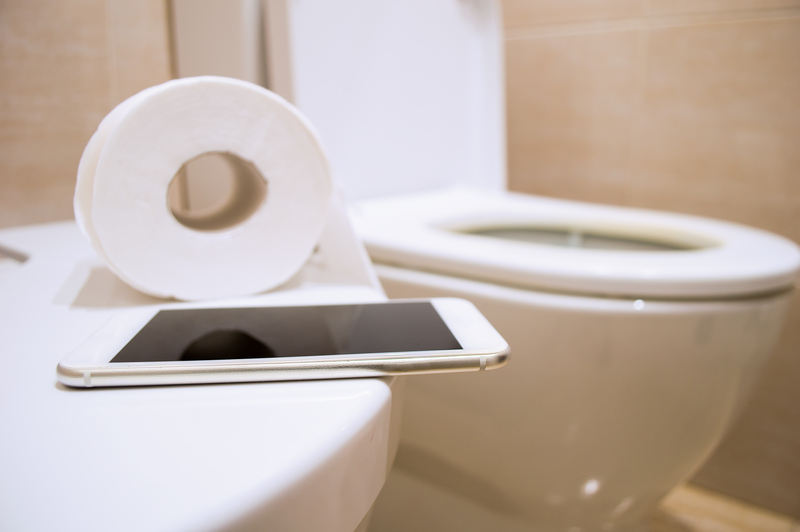Breath of Safety: Safeguarding Indoor Environments Through Quality Air
Posted on 14/08/2025
Breath of Safety: Safeguarding Indoor Environments Through Quality Air
In our fast-evolving world, most people spend upwards of 90% of their time indoors, whether in homes, offices, schools, or public buildings. The quality of the air we breathe inside can have profound effects on our health, productivity, and general well-being. This reality elevates the importance of ensuring indoor air quality to unprecedented heights. Welcome to our comprehensive guide on the "Breath of Safety: Safeguarding Indoor Environments Through Quality Air," where we will explore the nuances of air quality, its impact, and actionable strategies for cleaner, healthier indoor spaces.
Understanding Indoor Air Quality (IAQ)
Indoor air quality, commonly abbreviated as IAQ, refers to the condition of the air within and around buildings. This encompasses factors such as pollution levels, humidity, ventilation, and the presence of microbial contaminants. Air quality in indoor environments plays a critical role--studies have firmly linked poor IAQ to respiratory diseases, allergies, headaches, fatigue, and even diminished cognitive performance.
- What Affects Indoor Air Quality?
- Sources of pollutants (chemicals, dust, mold, bacteria, pet dander)
- Poor ventilation and air circulation
- Building materials and furnishings
- Outdoor air pollution seeping indoors
- Humidity and temperature fluctuations
Why Is Safeguarding Indoor Air Quality Important?
*Ensuring* indoor environments remain safe is not merely a matter of comfort--it is a cornerstone of public health. According to the World Health Organization (WHO), low-quality indoor air contributes to millions of premature deaths annually due to conditions like asthma, heart disease, and lung cancer.
- Health Risks - Poor IAQ can trigger allergies, asthma attacks, headaches, and severe respiratory infections.
- Productivity Loss - People working or studying in spaces with compromised air quality report up to 10% lower productivity levels.
- Mental Well-Being - Clean air is linked to positive moods, less stress, and better focus.
- Children & Elderly - Vulnerable groups are at even greater risk, suffering long-term health complications from contaminants.

The Key Culprits Behind Poor Indoor Air
1. Volatile Organic Compounds (VOCs)
VOCs are gases emitted from thousands of different products: freshly painted walls, cleaning solvents, adhesives, and even new furniture. These compounds can linger long after an item is brought into your home or office, quietly affecting the air you breathe.
2. Particulate Matter (PM)
Particulate matter refers to microscopic particles such as dust, smoke, pollen, and dander. These can easily be inhaled, causing irritation of the lungs and worsening conditions like asthma and bronchitis.
3. Mold and Biological Contaminants
Humid environments provide a fertile ground for mold, bacteria, and dust mites. Mold spores floating in the air are a major concern--exposure can lead to allergies, respiratory distress, and even long-term health complications.
4. Carbon Monoxide and Other Gases
Combustion appliances, such as stoves and heaters, can emit dangerous gases like carbon monoxide (CO). Even in small amounts, CO exposure is highly toxic and potentially fatal.
- Radon - A naturally occurring radioactive gas that can seep through floors and walls, increasing cancer risk.
- Nitrogen dioxide - Produced by gas stoves and fires, contributing to respiratory issues.
- Ozone - Emitted by some indoor devices and cleaning agents.
Creating a Breath of Safety: Strategies for Superior Indoor Air Quality
1. Improve Ventilation
Effective ventilation is the foundation of safeguarding indoor air. Without a steady flow of fresh air, pollutants accumulate and concentrations rise.
- Open windows and doors routinely to allow circulation
- Use exhaust fans in bathrooms and kitchens
- Consider mechanical ventilation systems like HRVs (Heat Recovery Ventilators) for modern airtight buildings
2. Use High-Quality Air Purifiers
Air purifiers equipped with HEPA filters can remove up to 99.97% of airborne particles as small as 0.3 microns. Some advanced models also include activated carbon layers for volatile chemicals and UV-C light for microbes.
- Place air purifiers in bedrooms, living areas, and offices
- Replace and maintain filters regularly for optimum effectiveness
- Select models suited for room size and specific pollutant concerns
3. Control Sources of Contaminants
Safeguarding indoor environments also revolves around minimizing or eliminating pollutant sources:
- Choose low-VOC or VOC-free paints, finishes, and cleaning products
- Ban smoking indoors--cigarette smoke is a major air pollutant
- Regularly clean and vacuum using a HEPA-filter vacuum cleaner
- Address leaks promptly to prevent mold growth
- Ensure proper functioning of all combustion appliances
4. Maintain Healthy Humidity Levels
Keeping relative humidity between 30% and 50% discourages mold, bacteria, and dust mite proliferation while stopping the air from becoming uncomfortably dry.
- Use dehumidifiers in damp areas (basements, bathrooms)
- Add humidity in dry, heated climates with humidifiers
- Monitor with a digital hygrometer
5. Regularly Inspect & Maintain HVAC Systems
Heating, ventilation, and air conditioning (HVAC) systems can significantly influence indoor air quality:
- Change HVAC filters every 1-3 months, or as recommended by the manufacturer
- Schedule professional ventilation and duct cleaning annually
- Ensure all vents are unobstructed and clean
- Check for leaks, standing water, and signs of mold within the system
Innovative Trends in Indoor Air Quality Enhancement
Smart Air Quality Monitors
Modern technology has introduced smart indoor air monitors capable of detecting a range of pollutants, humidity, and CO2 levels in real time. Some models even sync with smartphones and smart home systems to automate ventilation and air purifier settings as needed.
- Instant alerts when pollutant levels spike
- Integration with HVAC or purifiers for hands-free, adaptive control
- Detailed air quality reports and trends analysis
Green Building Standards
Certifications such as LEED (Leadership in Energy and Environmental Design) and WELL prioritize healthy indoor air by mandating low-emission materials, rigorous ventilation standards, and ongoing air monitoring.
- Encourage use of nontoxic building materials
- Optimize building design for natural airflow
- Promote healthy, adaptable environments for occupants
Biophilic Design
Integrating living plants and nature-inspired elements into indoor spaces isn't just aesthetic--many plants can actively remove toxins from the air (such as peace lilies, spider plants, and snake plants). Plus, a connection to nature promotes psychological well-being.
Safeguarding Different Indoor Environments
Homes
In residential settings, proactive measures around ventilation, source control, and humidity are paramount. Regular cleaning, plant care, and seasonal HVAC maintenance go a long way toward safeguarding your peace of mind and loved ones' health.
Offices & Commercial Spaces
Large, shared environments may face elevated risks from higher occupancy, frequent cleaning, and diverse activities. Building managers should:
- Monitor air quality systematically
- Schedule regular cleaning using green-certified products
- Invest in robust, building-wide filtration and ventilation upgrades
- Encourage "clean desk" and anti-mold policies
Schools & Childcare Centers
Because children are more vulnerable to pollutant exposure, it's especially vital to maintain fresh, healthy air in educational settings. Schools should prioritize regular maintenance, repair of leaks, and air quality monitoring--ensuring proper airflow, particularly in older or poorly ventilated buildings.
Healthcare Facilities
Hospitals and clinics require rigorous standards--medical environments must limit the spread of airborne pathogens via advanced HVAC designs, state-of-the-art filters, and strict protocols for cleaning and maintenance.

Benefits of Prioritizing Quality Indoor Air
- Enhanced Health - Lower risk of asthma, allergies, infections, and chronic respiratory illnesses
- Improved Productivity - Cognitive clarity and energy levels rise in clean-air environments
- Greater Comfort - Elimination of odors, stuffy conditions, and extremes of dryness/humidity
- Peace of Mind - Knowing that your environment supports long-term wellness for your family or team
Final Thoughts: A Call to Action For Indoor Air Safety
The air we breathe indoors must be a source of safety, not harm. As science deepens our understanding of indoor air quality and its wide-ranging impact, we each carry a responsibility to foster healthy indoor environments--at home, work, and in our communities.
*Breathe in safety* by implementing the steps outlined here. Whether it's investing in state-of-the-art air purifiers, upgrading your building's ventilation, or simply opening a window, each action is a commitment to health and quality of life.
Remember: Air quality is invisible, but its consequences are not. Join the movement to protect our breath--and our future--by championing superior air quality in every space you inhabit. Make your next breath a breath of safety.



